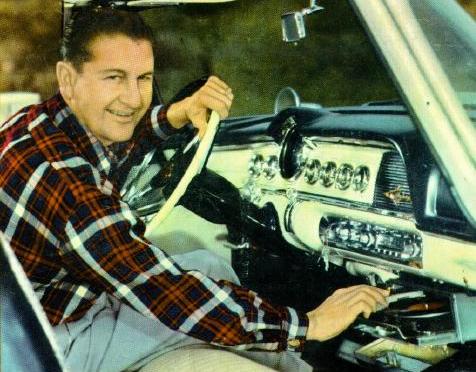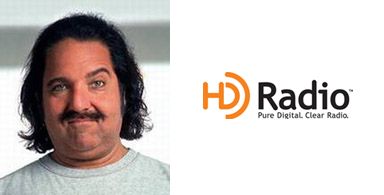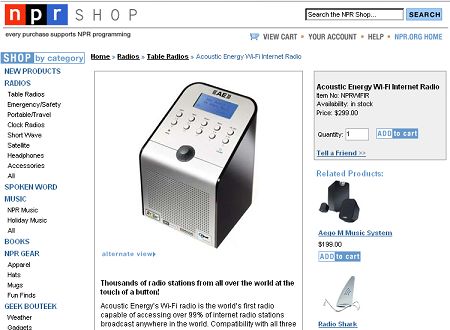Is that a photo of Lawrence Welk in his convertable with a record player installed under the dash? It sure is!
Why would people want that?
Well, they didn’t, really. Columbia Records and the Chrysler Corporation thought it would be a good idea. They went so far as to create another format [there is nothing new under the sun] in the 16 2/3 rpm record. They were the same size at the regular 7″ 45rpm records that we know.
People weren’t willing to buy records they could only play in the car. It was not convenient. In 1960, when they re-introduced a similar player that played the 45rpm records that everyone had, it still didn’t take off.
Today, USA Today has a color graph-free story about fidelity and media consumption. This use of the term fidelity addresses an inherent heirarchy in media consumption; viewing a movie in a theatre vs. viewing it via DVD vs. viewing it on a mobile phone. The basic premise is that consumers want the most pure experience possible, but they are willing to forego some of that fidelity in the pursuit of convenience.
PVR Wire had an article about this earlier this month, referring to an LA Times survey indicating that many more people are willing to watch video on their home computers, as opposed to the SMALL screen of the mobile phone. The participants cited cost and, of all things, low fidelity.
This line of thought was addressed when we looked at the blue film industry’s reluctance to upgrade to HD DVD and Blu Ray Disc.
The articles above dig further into the reasons of reluctance on the part of the consumer. The automobile record player goes to show that buy-in from car manufacturers does not equate mass market awareness or adoption. There is a happy medium in there somewhere, no pun intended.










